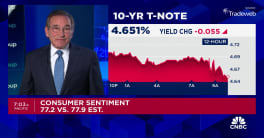The index measuring pending home sales held on to its winning streak in July, but its grip slipped a bit. The National Association of Realtors® (NAR) said today that its Pending Home Sales Index (PHSI) eked out a marginal 0.5 percent increase, making the month the sixth out of seven when contract signings gained compared to the previous month.
The PHSI registered 110.9 in July, the third highest reading this year, lagging only April and May. The June index as an upwardly revised 110.4. The July level was 7.4 percent higher than a year earlier and the index has increased year over year for 11 consecutive months.
The PHSI is a forward looking indicator based on contract signings for home purchases. Pending sales typically turn into closed transactions in less than 60 days.
Lawrence Yun, NAR chief economist, says the housing market began the second half of 2015 on a positive note, with pending sales slightly rising in July. "Led by a solid gain in the Northeast, contract activity in most of the country held steady last month, which bodes well for existing-sales to maintain their recent elevated pace to close out the summer," he said. "While demand and sales continue to be stronger than earlier this year, Realtors® have reported since the spring that available listings in affordable price ranges remain elusive for some buyers trying to reach the market and are likely holding back sales from being more robust. "
Yun said inventory shortages are likely to continue into the fall but despite this damper he expects the national median existing-home price to increase 6.3 percent in 2015 to $221,400 and that total existing-home sales will rise 7.1 percent to around 5.29 million, about 25 percent below the prior peak set in 2005 (7.08 million).
"In light of the recent volatility in the stock market, it's possible some prospective buyers may err on the side of caution and delay decisions, while others may view real estate as a more stable asset in the current environment," Yun continued. "Overall, the prospects for ongoing strength in the housing market remain intact for now. The U.S. economy is growing - albeit at a modest pace - and the labor market continues to add jobs. Uncertainty in the equity markets - even if the Fed raises short-term rates in September - could stabilize long-term mortgage rates and preserve affordability for buyers."
The PHSI in the Northeast increased 4.0 percent to 98.8 in July, and is now 12.1 percent above a year ago. In the Midwest the index remained unchanged at 107.8 in July, 5.7 percent above July 2014.







